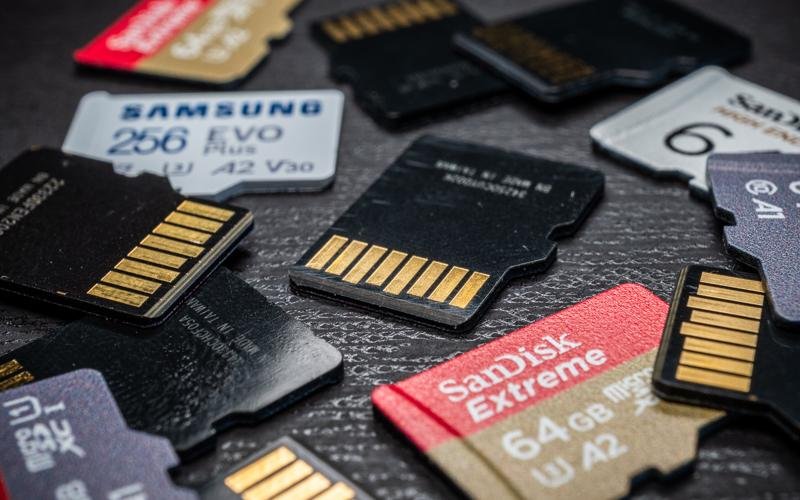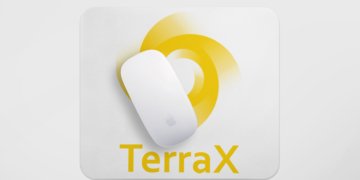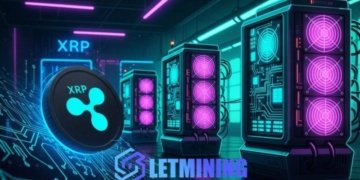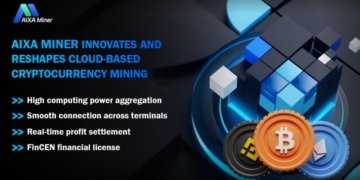The memory market, encompassing memory chips and storage devices, is an essential pillar of modern technology, from smartphones to data centers. As technology becomes more advanced and data-dependent, the demand for efficient memory solutions continues to surge. The memory market is a critical component in various industries, including consumer electronics, automotive, telecommunication, and data centers, owing to its role in supporting high-speed data storage and retrieval. The sector’s rapid development is also closely linked to innovations in semiconductor technologies, leading to the constant evolution of memory types and applications.
✅Get a Sample Copy of Research Report (Use Corporate Mail id for Quick Response): https://www.persistencemarketresearch.com/samples/33356
Overview of the Memory Market
The global memory market is anticipated to reach a valuation of US$ 240.7 billion by 2023 and is expected to expand to US$ 480.0 billion by 2033. This represents a significant CAGR of 7.1% from 2023 to 2033. The market’s rapid growth can be attributed to the increasing demand for memory products in various applications, ranging from smartphones to industrial equipment. The semiconductor industry, which forms the backbone of memory technology, has seen significant advancements, particularly with the advent of high-performance memory solutions for data-intensive applications.
The primary growth drivers of the memory market are rising technological advancements, the increasing demand for smartphones, and the expanding usage of wearable technologies. The surge in data generation, with the rise of the Internet of Things (IoT), and the need for large-scale data storage in data centers have also fueled memory market growth. Among the various segments, semiconductor memory devices hold the largest market share. Geographically, North America leads the market, owing to the presence of leading players like Micron Technology Inc. and Samsung Electronics Co. Ltd., along with a robust demand for high-performance memory devices in industries such as automotive, data centers, and telecommunications.
Key Highlights from the Report
➤ The global memory market size is estimated to reach US$ 240.7 billion in 2023.
➤ The memory market is projected to surpass US$ 480.0 billion by 2033.
➤ A steady CAGR of 7.1% is expected from 2023 to 2033.
➤ The USA memory market is forecasted to reach US$ 144.5 billion by 2033.
➤ North America is projected to be a significant market contributor in the coming years.
➤ Increasing demand for data centers and IoT applications is driving the memory market.
Market Segmentation: Product Type and End-User Insights
The memory market can be broadly segmented based on product type, end-user application, and regional demand. The primary product types in the market include dynamic random-access memory (DRAM), flash memory, static random-access memory (SRAM), and non-volatile memory (NVM). Among these, DRAM remains the leading product segment due to its widespread use in smartphones, personal computers, and data centers. Flash memory is also gaining significant traction due to its advantages in high-speed data transfer, energy efficiency, and compact form factors, making it ideal for applications in consumer electronics like smartphones, tablets, and wearables.
The end-user applications of memory technology are diverse, ranging from consumer electronics to automotive systems, telecommunications, and data centers. Consumer electronics, especially smartphones, have been the largest contributor to the demand for memory products. The proliferation of smart gadgets and wearables has substantially increased the need for high-performance memory chips. In addition, sectors like automotive and telecommunications are witnessing growing memory demand, particularly in areas like autonomous driving systems, infotainment systems, and 5G telecommunications networks.
In the industrial segment, data centers play a pivotal role in driving memory consumption, as these centers require high-capacity, high-speed memory devices for data storage and processing. With companies like Microsoft, Google, and Meta investing heavily in data center infrastructure, the need for advanced memory solutions to handle massive data volumes continues to grow. Additionally, cloud computing services are anticipated to expand memory demand, particularly in hyper-scale storage systems.
Regional Insights: Memory Market Dynamics Across the Globe
The global memory market is influenced by various regional dynamics. North America leads the market, with the United States accounting for a significant share. In 2023, North America’s memory market is projected to be valued at US$ 92.91 billion, with a CAGR of 6.0% from 2023 to 2033. The region’s dominance is largely due to the presence of major players such as Micron Technology, Intel Corporation, and SK Hynix. Moreover, the growing demand for high-performance computing, AI applications, and data center storage is further propelling the market in North America. In addition, ongoing research and development (R&D) activities to create next-generation memory solutions are accelerating market growth.
Asia-Pacific (APAC), particularly South Korea and Japan, is another significant region for the memory market. South Korea’s Samsung Electronics and SK Hynix are among the top global memory suppliers, contributing significantly to the region’s market share. South Korea is expected to create an absolute dollar opportunity of US$ 10.1 billion by 2033, with a 7.5% CAGR from 2023 to 2033. Japan, too, is a major player, particularly in the automotive and industrial sectors, with companies like ROHM Co. Ltd. and Fujitsu Ltd. leading the charge. Japan’s memory market is predicted to surpass US$ 35.0 billion by 2033, growing at a 6.6% CAGR.
Market Drivers: Fueling Memory Market Expansion
The growth of the memory market can be attributed to several key drivers. First and foremost, the increased demand for smartphones and other consumer electronics has been a primary factor in driving memory sales. With the constant release of new smartphone models, wearables, and gaming consoles, memory manufacturers are under pressure to innovate and produce high-capacity and high-performance memory chips.
Another key driver is the rise of data-centric applications. The surge in data generated by IoT devices, cloud computing, and AI technologies has led to a growing demand for memory solutions capable of handling vast amounts of information. For instance, data centers are investing in flash memory and solid-state drives (SSDs) to meet the performance needs of big data analytics, machine learning, and real-time data processing.
Finally, the adoption of next-generation technologies such as 5G and autonomous vehicles is a significant driver of memory demand. 5G networks, in particular, require high-performance memory solutions to support the exponential increase in connected devices and data traffic.
Market Restraints: Challenges to Growth
While the memory market is witnessing robust growth, it is not without its challenges. One of the primary restraints is the high cost of advanced memory technologies, such as DRAM and NAND flash memory. These technologies require significant investment in research, development, and manufacturing infrastructure. As such, the high cost of production can limit market penetration, especially in emerging markets where price sensitivity is higher.
Another challenge is the supply chain volatility that has affected the semiconductor industry. Global semiconductor shortages, largely driven by geopolitical tensions, supply chain disruptions, and manufacturing delays, can create bottlenecks in memory chip production. This issue can lead to pricing fluctuations and hinder the overall growth of the memory market.
Lastly, while the memory industry is growing rapidly, it faces intense competition. Companies must constantly innovate to meet the evolving needs of end-users, which requires substantial investments in R&D and the development of next-generation memory technologies.
✅Request for Customization of the Research Report: https://www.persistencemarketresearch.com/request-customization/33356
Market Opportunities: Future Prospects
Despite the challenges, the memory market offers significant opportunities for growth. The development of new memory technologies, such as magnetoresistive random-access memory (MRAM), resistive RAM (ReRAM), and phase-change memory (PCM), presents a substantial opportunity for companies to capture market share. These memory technologies offer distinct advantages in terms of speed, energy efficiency, and data retention, which are crucial for emerging applications like IoT, wearables, and autonomous vehicles.
Furthermore, the increasing adoption of cloud computing, edge computing, and AI-driven applications presents an opportunity to scale memory solutions for big data storage and processing needs. Data centers, which serve as the backbone of modern cloud services, will continue to drive demand for high-capacity and high-performance memory chips.
In the automotive sector, the shift toward electric vehicles (EVs) and autonomous driving is expected to drive demand for memory solutions capable of supporting complex in-car systems, including infotainment, navigation, and safety systems.
Frequently Asked Questions (FAQs)
➤ How Big is the Global Memory Market?
➤ Who are the Key Players in the Global Memory Market?
➤ What is the Projected Growth Rate of the Memory Market?
➤ What is the Market Forecast for the Memory Market in 2032?
➤ Which Region is Expected to Dominate the Memory Industry in the Forecast Period?
Company Insights
✦ Samsung Electronics Co. Ltd.
✦ Micron Technology Inc.
✦ SK Hynix Inc.
✦ ROHM Co. Ltd.
✦ STMicroelectronics NV
✦ KIOXIA Corporation
✦ Fujitsu Ltd.
✦ Kingston Technology Co. Inc.
Recent Developments in the Market
■ In December 2022, ROHM Co. Ltd. partnered with BASiC Semiconductors Ltd. to work on advanced system-on-chip (SoC) solutions for automotive applications.
■ In January 2023, Micron Technology Inc. launched a new generation of NVMe SSDs for data centers, significantly improving power efficiency and performance.
The memory market is on an upward trajectory, with advancements in technology, regional dynamics, and end-user demand driving its expansion. The industry’s future is bright, with ample opportunities for innovation and growth in the coming years.
Contact Us:
Persistence Market Research
G04 Golden Mile House, Clayponds Lane
Brentford, London, TW8 0GU UK
USA Phone: +1 646-878-6329
UK Phone: +44 203-837-5656
Email: sales@persistencemarketresearch.com
Web: https://www.persistencemarketresearch.com
About Persistence Market Research:
At Persistence Market Research, we specialize in creating research studies that serve as strategic tools for driving business growth. Established as a proprietary firm in 2012, we have evolved into a registered company in England and Wales in 2023 under the name Persistence Research & Consultancy Services Ltd. With a solid foundation, we have completed over 3600 custom and syndicate market research projects, and delivered more than 2700 projects for other leading market research companies’ clients.
Our approach combines traditional market research methods with modern tools to offer comprehensive research solutions. With a decade of experience, we pride ourselves on deriving actionable insights from data to help businesses stay ahead of the competition. Our client base spans multinational corporations, leading consulting firms, investment funds, and government departments. A significant portion of our sales comes from repeat clients, a testament to the value and trust we’ve built over the years.
This release was published on openPR.

















